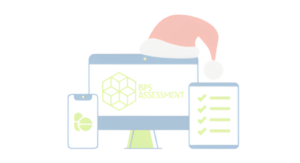If you’re preparing for a Prescribing Safety Assessment (PSA) re-sit, you’re not alone – and you’re not at a disadvantage. Many students go on to pass the PSA confidently on their second attempt with the right preparation, mindset, and resources.
This blog is here to help you reflect, reset, and build a practical, focused plan to succeed next time.
1. Reflect on your first attempt
Before jumping straight back into revision, take time to reflect on your previous sitting:
- What questions types did you find most difficult?
- Were there certain topics you felt underprepared for?
- Did you run out of time or rush through questions?
Use any feedback you received, either from your practice papers or your exam performance, to identify where things went wrong. Understanding why you struggled is the first step to improvement.
2. Give yourself enough time to prepare
Plan your time well and start early. Build a revision schedule that gives you:
- Regular study sessions each week
- Time to review key prescribing topics (e.g. dose calculations, prescribing for special populations)
- Time to complete full practice papers under exam conditions
Aim for quality over quantity – even short, focused sessions can be effective when you’re working on specific areas of weakness.
3. Focus on the question types that cost you marks
The PSA is made up of eight distinct question styles, each testing different aspects of safe prescribing. Some commonly tricky areas for re-sitters include:
- Prescribing – giving the optimal answer (for full marks)
- Dosage calculations
- Adverse drug reaction identification
- Prescription review questions
Work through each question style individually and learn the best strategy to tackle them. There’s a breakdown of all question types on the BPS Assessment Learner’s Portal to guide your practice.
4. Practise using the BNF effectively
Knowing how to navigate the BNF resources quickly and confidently is crucial for the PSA. If you’re resitting, chances are you already understand the structure, but you may still be losing time on questions if you can’t locate key information fast.
Focus on:
- Drug indications, contraindications, and dosing guidance
- Prescribing for specific populations (e.g. elderly, renal impairment, pregnancy)
- Key safety alerts and monitoring requirements
Spend time practising BNF-based lookups during your revision, especially within the timed setting of a mock paper. Remember you’ll have access to; Medicines Complete BNF and BNFc and NICE BNF and BNFc (only in the UK), so it’s important to be familiar with both.
5. Make the most of freely available resources
You don’t need expensive tools to pass the PSA, just the right ones.
On the BPS Assessment Learner’s Portal, you’ll find:
- Free practice papers designed to reflect the real exam
- Detailed explanations for how to answer each question style helping you learn from mistakes
- Exam tips and blog content tailored to both first-time sitters and resitters
Use these resources to revise smarter and improve your confidence ahead of your re-sit.
6. Don’t be afraid to ask for support
It’s easy to feel disheartened after not passing the first time, but support is available:
- Speak to your tutors, prescribing leads, or university faculty – they can help identify areas for targeted revision.
- Connect with peers who have sat or passed the exam recently.
- Consider forming a study group or joining an online forum where prescribing challenges and tips are shared.
And most importantly – be kind to yourself. Failing an exam does not define your ability to be a safe, competent prescriber.
You’ve Got This
Failing the PSA first time isn’t the end of your journey – it’s a step on the path to mastering safe prescribing. With focused revision, support from your faculty, and the resources available, you can go into your re-sit with clarity and confidence.
Start early, stay focused, and believe in your ability to succeed!





